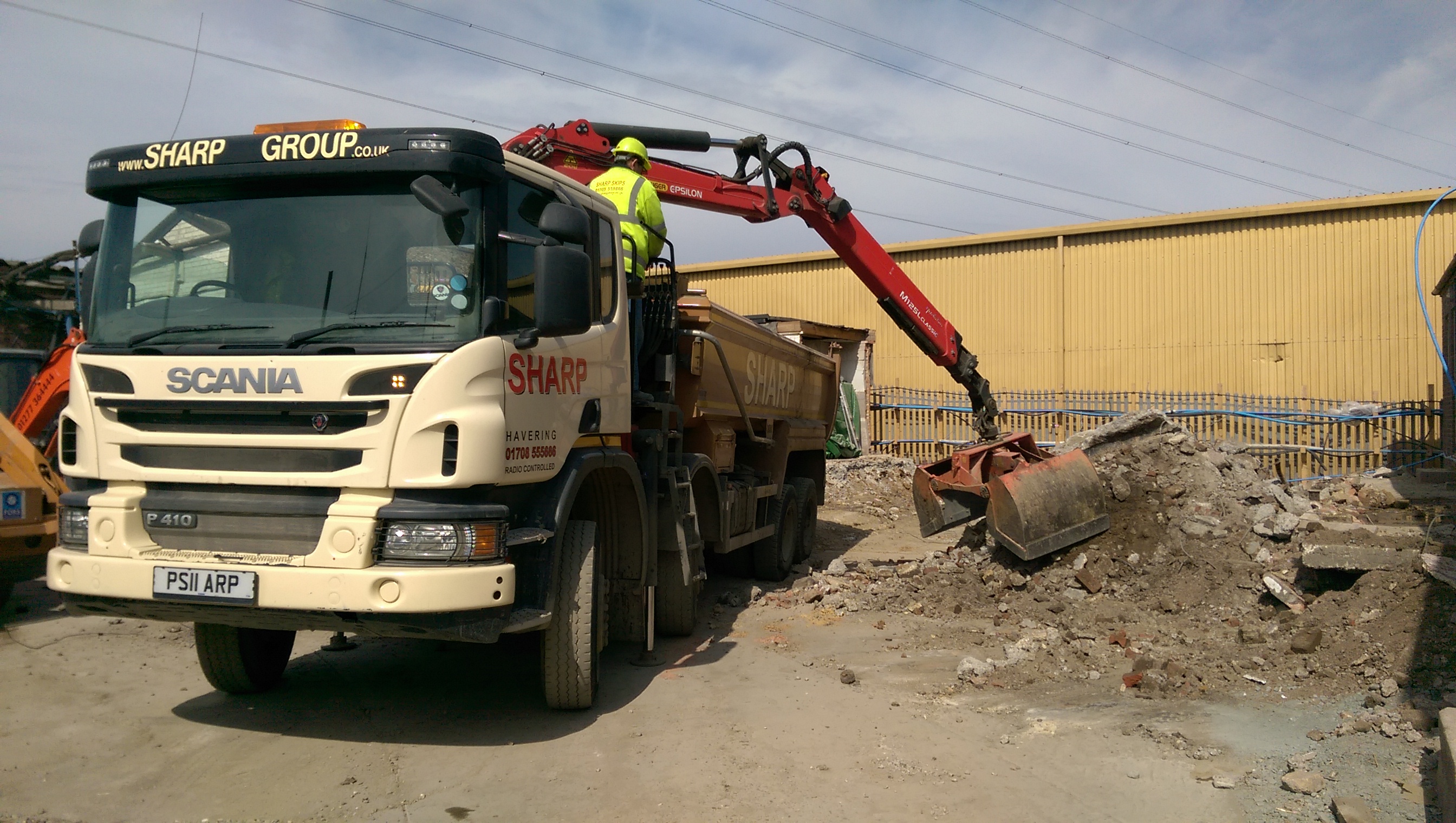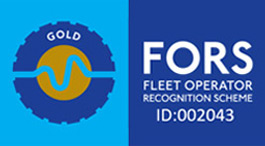Back to Listing
Grab Loader vs. Skip Hire

When it comes to waste removal for your project, you may find yourself choosing between grab loader hire and skip hire. Each option has its benefits, depending on your specific needs. For large, ongoing projects where convenience is key, grab loader hire often proves to be the better choice.
On the other hand, if your project is smaller or more short-term, skip hire might be the more practical and cost-effective solution. Understanding the differences in capacity, cost, and suitability for your type of waste will help you make the right decision.
In this article, you'll discover the main features of both grab loaders and skips, allowing you to choose the best option for your waste removal needs. Whether you're managing a construction site, landscaping project, or a home renovation, having the right waste management plan is essential.
Understanding Grab Hire and Skip Hire
When considering waste removal for your project, it's essential to know the key features of both grab hire and skip hire. Each option has distinct advantages depending on your specific needs.
Key Features of Grab Hire
Grab hire involves using a grab lorry equipped with a hydraulic arm. This arm can reach over fences or walls, allowing for easy loading of waste. Grab lorries are especially useful for heavy materials, like soil, rubble, or large bulky items.
You typically can remove waste more quickly with grab hire, as the lorry can leave your site shortly after loading. These services are often preferred for larger or ongoing projects where continual waste removal is necessary.
Key benefits include:
- Accessibility: Can reach difficult spaces.
- Speed: Waste can be removed in one swift operation.
- Volume: Suitable for large amounts of waste.
Key Features of Skip Hire
Skip hire involves renting a large container, known as a skip. You have several sizes to choose from, including mini, midi, and large skips. This flexibility lets you select the right size based on your project's waste volume.
Skips are usually kept on site for a set period, allowing you to fill them at your own pace. They are ideal for home renovations or small projects where waste accumulation happens gradually.
Important points to consider:
- Container sizes: Available in multiple sizes for different needs.
- Control: You manage when to fill and when to have it collected.
- Cost: Can be more economical for smaller, set projects.
Both options have unique advantages that cater to different project requirements. Understanding these features helps you make the right choice for effective waste management.
Determining the Right Choice for Waste Removal
Choosing between grab hire and skip hire can depend on your specific project needs. Each method has distinct advantages for waste management.
Consider Your Project Type:
-
Construction Sites: Grab hire is often faster for removing large amounts of waste. It allows for quick disposal, reducing delays.
-
Long-term Projects: Skip hire might work better if your project takes time. Skips store waste on-site for extended periods.
Cost Factors:
Skip hire may seem cheaper at first, but with grab hire, you pay only for the waste removed. This can result in better cost efficiency for larger loads.
Access and Space:
-
Grab Lorries: Ideal for sites with limited access. They can reach hard-to-reach areas without needing much space.
-
Skips: Require space for placement. Consider if you have room for a large container on your site.
Flexibility:
Grab hire can be scheduled quickly, which is great for unexpected waste. Skips provide the option to fill at your convenience.
Environmental Considerations:
Both methods support waste disposal but think about your local recycler’s requirements. Ensure your waste management aligns with local regulations.
By weighing these factors, you can determine which option is best for your waste disposal needs.
Advantages of Grab Hire for Waste Management
Using grab hire for waste management has several advantages that can benefit your project significantly.
Quick and Efficient Removal
Grab hire trucks have a hydraulic arm that can reach over obstacles. This allows for fast and efficient waste removal. In many cases, the process can take as little as 30 minutes.
Large Capacity
A grab hire truck can hold up to three times more waste than a standard skip. This is ideal for projects generating large amounts of waste. You can clear more material in one go, saving time and effort.
Cost-Effective
With grab hire, you only pay for the waste removed. This can be more economical than skip hire, especially for large clean-ups. You avoid extra costs associated with keeping a skip on-site longer than necessary.
Minimal Disruption
Grab hire causes less disruption on-site. Since it is a quick process, it is perfect for busy construction areas. You won’t have to worry about a bulky skip taking up space for days or weeks.
Flexible Use
Grab hire is suitable for various types of waste, including soil, rubble, and general rubbish. This flexibility makes it valuable for different project needs. You can adapt to changing circumstances without hassle.
When to Choose Skip Hire for Your Project
Skip hire is a great option for various projects. Here are some situations where it makes sense to choose this method:
-
Short-term Projects: If your project is brief, like a home renovation, skip hire provides a practical solution. You can have the skip on site for just the time you need.
-
Predictable Waste Amounts: When you know how much waste you'll generate, skip hire allows for easy planning. You can select a skip size that matches your needs.
-
Access Issues: If your site has limited access, a skip can be easier to manage than a grab loader. You can place the skip in a convenient spot and keep it there during your project.
-
Cost-Effectiveness: For many small to medium projects, skip hire can be more affordable than grab hire. This is especially true if you don't need frequent waste removal.
-
Long-Term Projects: If your project is ongoing, a skip can serve as a dedicated waste container. You can keep it for extended periods without needing constant pickups.
Keep these points in mind when considering your waste removal options. Contact a reliable skip hire company to discuss your project needs and find the best fit for you.
Comparing Costs: Grab Hire Versus Skip Hire
When deciding between grab hire and skip hire, cost is a key factor. Both options have their advantages depending on your project needs.
Grab Hire:
- Cost-Effective for Large Volumes: If you're dealing with a significant amount of waste, grab hire can be cheaper. The ability to load waste quickly saves you time and potentially reduces labour costs.
- Accessibility: Grab lorries can reach hard-to-access areas. This means you may avoid extra charges for moving a skip to a suitable location.
Skip Hire:
- Variable Pricing: Skip hire prices vary based on skip size and hire duration. Smaller skips are cheaper, but larger skips can add up quickly if you need them for long periods.
- Fixed Capacity: Skips have a set volume. If you underestimate, you might need multiple skips, increasing your overall costs.
Cost Comparison Table
| Feature | Grab Hire | Skip Hire |
|---|---|---|
| Cost for Large Volumes | Generally Cheaper | Can be more expensive |
| Loading Speed | Fast | Slower, manual loading |
| Accessibility | Good for tight spaces | Requires clear access |
| Duration | Usually just a few hours | Can be hired for days or weeks |
Consider your specific needs, as both options have unique cost benefits. The right choice depends on your site layout and the amount of waste you need to remove.
Project Suitability: Construction Sites and Home Renovations
Choosing the right waste removal method depends on your project's specific needs. Both grab hire and skip hire have advantages tailored to construction sites and home renovations.
Grab Hire for Construction Sites
Grab hire is an excellent choice for construction sites. Grab lorries can remove large amounts of waste quickly. This method is efficient for long-term projects where waste build-up can occur frequently.
- Capacity: Grab lorries can typically hold 15 to 16 cubic yards of waste, making them ideal for bulky materials like soil, rubble, and large debris.
- Speed: They can access hard-to-reach areas and load waste in minutes, reducing downtime on your project.
- Versatility: Grab hire is suitable for various materials, including mixed waste, which is common on construction sites.
You can schedule regular collections, ensuring your site remains clean and safe.
Skip Hire for Home Renovations
Skip hire is often preferred for home renovation projects. Skips come in various sizes, allowing you to select one that fits your specific needs.
- Range of Sizes: You can choose from small skips for minor clear-outs to larger ones for significant renovations.
- Flexibility: Skips can be kept on-site for a longer period, giving you time to fill them at your own pace. This is useful for step-by-step renovation projects.
- Cost-Effectiveness: For smaller projects, hiring a skip can be more economical than grab hire.
This method works well when you have a clear idea of your waste needs and a defined timeline for your renovations.
Ease of Use: Operational Differences
When deciding between grab hire and skip hire, ease of use is a key factor. Both methods have unique operational features that can affect your project.
Grab Hire:
- Utilises a grab lorry with a hydraulic arm.
- Can reach over walls and fences, allowing access to hard-to-reach areas.
- Waste is collected quickly and efficiently in one visit.
- Ideal for sites with a large volume of waste or heavy materials.
Skip Hire:
- Involves renting a skip, which stays on site for a set period.
- Self-service; you load the skip at your convenience.
- Requires space for the skip and may need a permit for public roads.
- Loading may take longer, especially for larger items.
Considerations:
- Speed: Grab hire is typically faster due to its ability to collect waste in one go.
- Access: Grab lorries can access many areas that skips cannot.
- Flexibility: Skip hire allows you to load waste at your own pace.
In summary, if you need a quick and efficient solution, grab hire may be better. If you prefer to manage loading yourself, skip hire could be the right choice for your project. Choose based on your specific needs and site conditions.
Environmental Considerations in Waste Disposal
When choosing waste disposal methods, look at the environmental impacts of both grab hire and skip hire. Each option has unique benefits that can affect your project's sustainability.
Grab hire is efficient for quick waste removal. Waste gets collected and taken directly to recycling facilities. This process can lower the carbon footprint since it minimises transportation times.
Skip hire, on the other hand, allows you to sort waste at the source. This method promotes recycling by encouraging proper waste segregation. You can easily separate recyclables from general waste, which is beneficial for the environment.
Here’s a quick comparison:
| Aspect | Grab Hire | Skip Hire |
|---|---|---|
| Waste Collection | Fast and direct | Requires more time to fill |
| Accessibility | Reaches over obstacles | Limited by site access |
| Recycling | Direct to recycling facilities | Encourages separation at the site |
In both cases, you should choose a responsible waste management provider. They will dispose of waste according to local regulations, ensuring as much material as possible is recycled.
Considering these environmental factors will help you make a more informed choice. Ultimately, your decision impacts not just your project but also the community and environment.
Legality and Permissions: Understanding the Requirements
When you choose between grab hire and skip hire, it’s important to be aware of the legal requirements. These can vary based on your location and the specifics of your project.
If you plan to place a skip on a public road, you will likely need a permit. This is a legal requirement to ensure safety and accessibility. Your skip hire company can help you apply for this permit.
For grab hire, the rules may be different. Generally, grab hire trucks can access your site directly. This means you won’t often need a permit unless the truck has to park on a public road.
Key Considerations:
- Skip Sizes: Choose the right skip size based on your waste volume. This helps avoid extra trips and potential fines.
- Skip Hire Company: When selecting a skip hire company, confirm they are licensed and can handle permits for you.
- Grab Hire Truck: Ensure the grab hire truck is suitable for your project. It should meet all local regulations regarding waste removal.
Make sure to check local laws regarding both skip and grab hire to avoid penalties. Always plan ahead to ensure compliance with all necessary permissions.
Customer Experiences and Reviews
When choosing between grab hire and skip hire, customer experiences can provide useful insights.
Many users prefer grab hire for its convenience. Customers often note the speed of service and the ability to reach difficult locations without extra effort. This option is particularly appreciated during larger projects where time is crucial.
On the other hand, skip hire users frequently mention cost-effectiveness. Many find that for smaller jobs, hiring a skip is more budget-friendly. However, they do point out that loading the skip requires additional work on their part.
Customer Reviews Summary:
| Feature | Grab Hire | Skip Hire |
|---|---|---|
| Ease of Use | High | Moderate |
| Cost | Varies, often higher | Generally lower |
| Time Efficiency | Quick removal | Slower, dependent on schedule |
| Flexibility | Suitable for many sites | Best for accessible areas |
Listening to your peers can guide your choice. Customers often recommend considering the nature of your project. If you have lots of waste and need quick removal, grab hire may suit you best. For less waste and cost concerns, skip hire could be the way to go.
Ultimately, weigh the benefits of both options against your specific needs. Reading customer feedback can help you make a more informed decision about what works best for your situation.
Conclusion: Making an Informed Decision
When deciding between grab hire and skip hire for your project, consider your specific needs. Each option has its strengths.
Grab hire is ideal for:
- Large volumes of waste
- Difficult access sites, like construction zones
- Quick removal with less manual effort
Skip hire works well for:
- Home renovations where waste is manageable
- Set periods to keep waste on-site
- Easy access to the location
Think about your project's requirements. Measure the amount of waste you expect to handle. If it's a large load, grab hire may be the better choice. For smaller, more controlled jobs, skip hire could be suitable.
Also, consider your budget. Grab hire can often save time and money for big projects. Skip hire may cost less for smaller quantities but requires more time for loading.
Lastly, check local regulations. Some areas have specific rules about which method is allowed.
By weighing these factors—waste volume, location accessibility, budget, and regulations—you can choose the best method for your needs. Taking the time to assess these aspects will help ensure a smooth waste removal process.
Need efficient skip hire in London or Essex? Contact Sharp Skips for fast delivery and affordable rates on skip hire, roll on off hire, and grab loader hire today!








